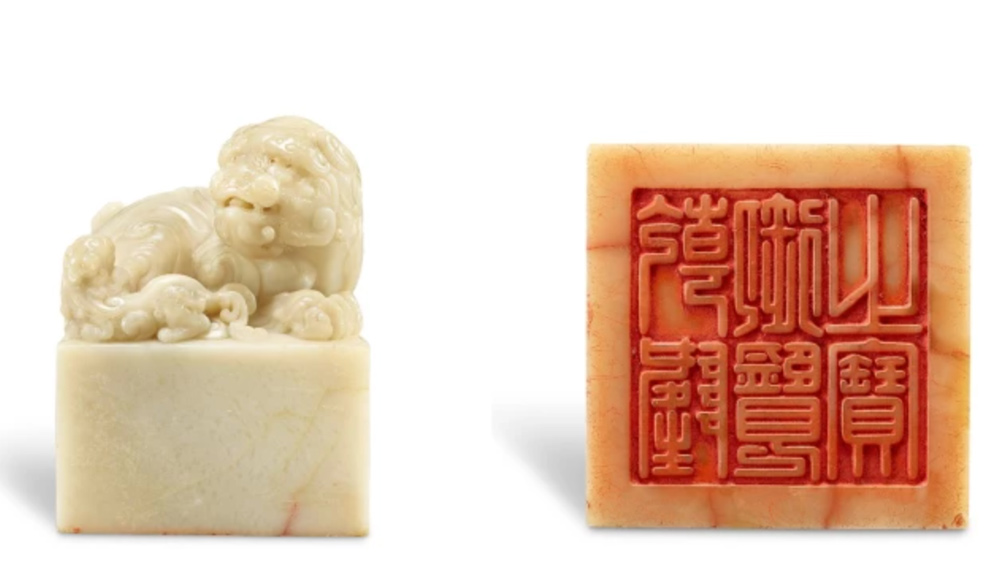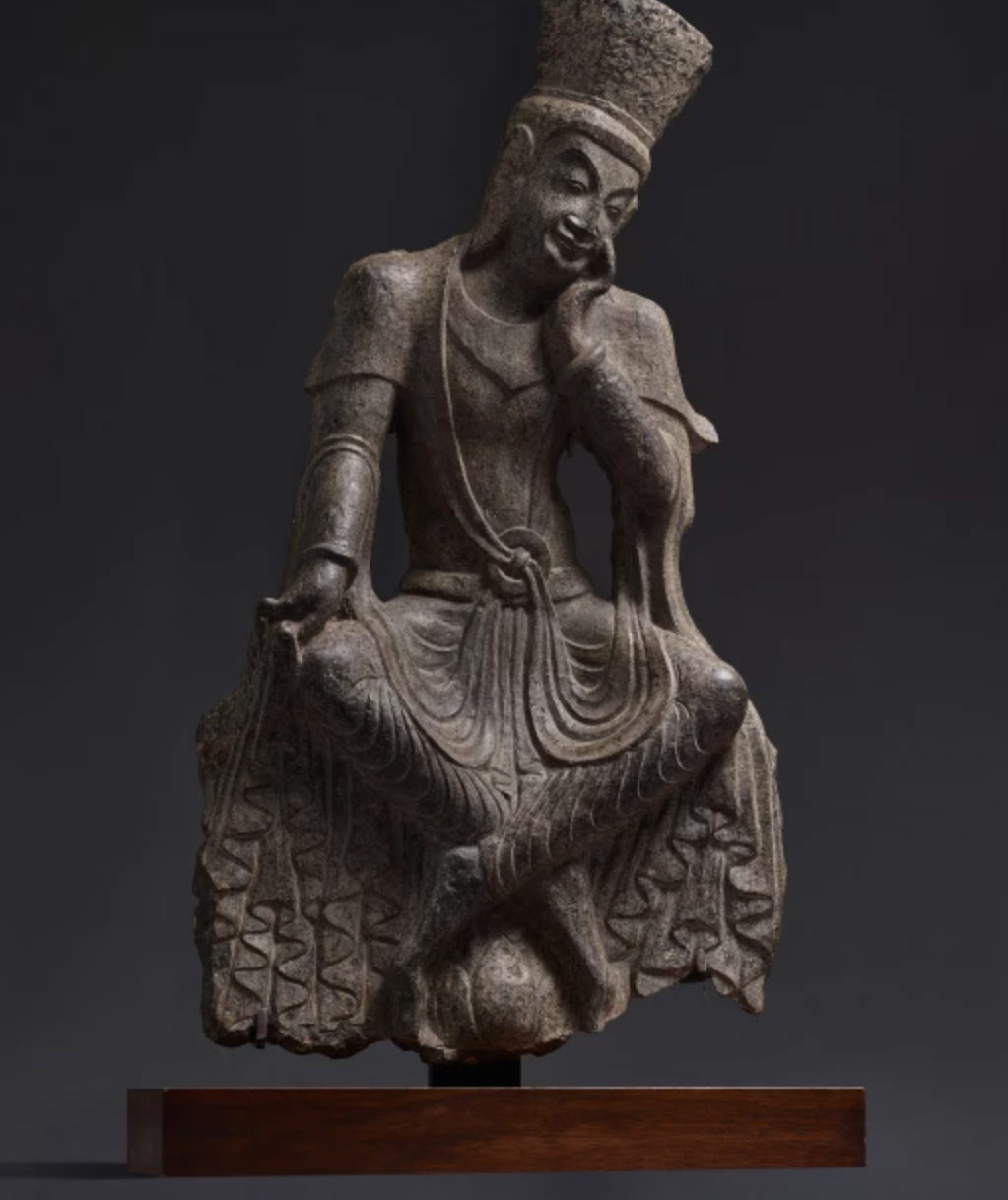Imperial porcelains from Joseph Lau’s collection are also in the lineup
Sotheby’s Hong Kong Chinese Works of Art 2022 Spring Sale Series is highlighted by a highly important soapstone seal carved for the Qianlong Emperor, prominently impressed on many of the greatest national treasures of China.
The most iconic among all seals destined for art connoisseurship, this superb imperial seal is the highlight of the Hong Kong chapter of the Dr. Wou Kiuan Collection, a series of four single-owner sales to held globally throughout 2022.

The seal is found prominently impressed on countless important Chinese paintings including Fan Kuan’s “Travelers Among Mountains and Streams,” Guo Xi’s “Early Spring,” Wang Ximeng’s “A Panorama of Rivers and Mountains,” and many of the finest paintings by all the great masters, from Emperor Huizong to Ni Zan, Qiu Ying, Zhu Da, Lang Shining. No other imperial seal to have come to market appears on such a large number of historically important paintings.
This seal was carved by a master craftsman working for the Qianlong Emperor’s father Yongzheng and grandfather Kangxi.
“This season boasts a striking array of Chinese art from prominent private collections around the globe,” says Nicolas Chow, Sotheby’s Asia chairman and international head and chairman of Chinese Works of Art, adding that the seal is “perhaps the most famous seal impression in the history of Chinese art.”

Emperor’s legacy
The seal was selected by Qianlong around 1735 to 1736 for the all-important purpose of recording the finest works in his art collection. It was extensively used from the early years of the Emperor’s reign to the completion of the Shiqu Baoji, his first catalogue of the imperial collection, in 1745.
Cataloguing the paintings passed down over the centuries was a way for the Qianlong Emperor to own Chinese history. They wanted to leave his mark on all the works that most profoundly symbolized its glorious heritage, furthering his political legitimacy.
The worn characters on the seal face capture all the hundreds of embraces this object has had with masterworks of the Imperial collection and testify to the Emperor’s mad devotion for his collection.

After the Emperor’s death in 1799, the seal was transferred to the Shouhuangdian, the temple of imperial ancestors which overlooked the Forbidden City.
During the years of turmoil toward the end of the Qing dynasty, over 100 years later, the seal made its way to Europe to resurface in 1965 at an auction in Sotheby’s London. It was purchased there by Wou Kiuan and has since disappeared from the public eye for more than 50 years.
Fine collection
The Spring sale is also highlighted by a selection of Imperial porcelains from Joseph Lau’s collection, one of the finest ever assembled in the field. The group features eight pieces of imperial porcelain, which were acquired from some of the greatest collections.

Lau, according to Chow, is “a name that resonates with collectors around the globe and stands for excellence. Chinese art is at the genesis of Joseph Lau’s adventure with collecting art and it is on Chinese art indeed that he cut his exacting eye.”
The works amassed by Lau occupies pride of place among the finest in the field and will delight connoisseurs of Chinese porcelains. This selection of beautiful pieces is an opportunity for the most discerning collectors to acquire a piece from Lau’s celebrated collection.
Barely in his 30s, Lau walked for the first time into a Sotheby’s preview in the mid-1980s, a time many consider to be the first golden age of Sotheby’s Hong Kong. This was when the celebrated collections of J.M. Hu, T.Y. Chao, Paul and Helen Bernat, and the British Rail Pension Fund came to market.

During the following 10 years, Lau assembled one of the finest collections of Chinese porcelain ever, articulated around masterpieces, each representative of the best of a certain period and type, and handpicked from the most prestigious collections.
Forbidden magnificence
Adding to this season’s strong lineup of renowned private collections are Qing imperial porcelain from the Marchant Collection, erotic Chinese art from the Bertholet Collection, and Jades from the De An Tang Collection.
The widely exhibited and published Bertholet Collection presents a group of paintings and works of art. This includes Gardens of Pleasure, an imperial album of eight exquisitely executed paintings from the Kangxi period, formerly in the collection of C.T. Loo.

Similarly, the De An Tang is the only private collection of jade ever to have been exhibited in the Forbidden City, at the Yongshou Palace in 2004. Its highlights include a magnificent Qianlong Khotan-green jade boulder gilt-inscribed with six imperial poems and a Ming dynasty large yellow jade figure of a camel from the Gerald Godfrey Collection.
The sale also includes an extremely rare and highly important Northern Wei limestone seated figure of a “pensive” Matreiya formerly from the collections of Albright-Knox Art Gallery and Norman A. Kurland.
Other highlights include an extremely rare miniature falangcai ‘boys’ double-gourd vase inscribed with a blue-enamel Qianlong mark, a superb and large blue and white “deer” vase that is reminiscent of Castiglione’s masterwork, and an enchanting group of 21 white and green early wares formerly from the collection of Dr. Carl Kempe.

7Sotheby’s Hong Kong Chinese Works of Art 2022 Spring Sale Series runs from April 23 to 30, 2022. For more information, visit Sothebys.com.





